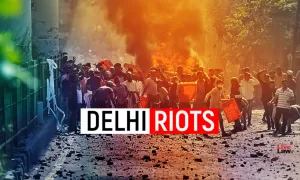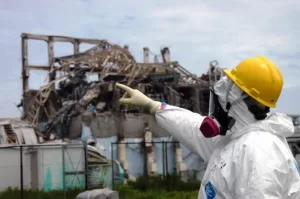There are hundreds of ugly faces of poverty. And most people can see the connection between it and one of the most heinous crimes humans can commit, within our own species: humans selling humans. Humans who are not poor, vulnerable, and traumatized selling others who are. Yet it tends to be defined in logistical terms as the recruitment, transportation, transfer, harboring or receipt of people through force, fraud or deception, with the aim of exploiting them for profit. Without moral considerations, the crime seems much blander than it really is. After all, force, fraud, deception, and exploiting for profit are pretty standard fare. Politicians, the people who supposedly represent us in the public sphere, often engage in these things.
Human trafficking is big business, the third biggest in the world after drugs and arms trafficking, and the fastest-growing activity of international criminal organizations. Nearly every country in the world is affected as a point of origin, transit, or destination. The huge scale makes it clear that it’s not a matter of a few bad apples, some Eastern European pimp, Turkish refugee smuggler, or Egyptian organ trafficker, but that it’s part of a whole system into which it snugly fits. If Yemeni and Palestinian refugees are beaten up by Greek police, stripped of their clothes and belongings, and sent naked into Turkey, who is responsible for the violence that made them flee their homes? Who sold the weapons that attacked their village? Which EU leaders praised Greece as Europe’s “shield” in deterring “migrants”? Who decided that Greece would receive EU funds to the tune of €700 million to upgrade border “security” with boats, helicopters, aircraft, thermal vision vehicles, and more fences and border guards? Our leaders.
The OSCE (Organization for Security and Cooperation in Europe), consisting of 57 states around the globe, lists the “root causes” of human trafficking:
[…] poverty, oppression, lack of human rights, lack of social or economic opportunity, dangers from conflict or instability and similar conditions. Political instability, militarism, civil unrest, internal armed conflict and natural disasters may result in an increase in trafficking. The destabilization and displacement of populations increase their vulnerability to exploitation and abuse through trafficking and forced labour. War and civil strife may lead to massive displacements of populations, leaving orphans and street children extremely vulnerable to trafficking.
But these aren’t roots. They’re the fruit of a global neoliberal system, so the OSCE tries to cover up and blame “uncivilized” countries: “In some States, social or cultural practices also contribute to trafficking”.
Interpol identifies five main areas of human trafficking. And all of them point to a system of interconnected interests that is the true root cause. First, trafficking for forced labor captures men, women, and child victims mainly from developing countries—a term suggesting that these countries should be more “civilized”—to be held, very often, in conditions of slave labor. Rather than generate direct profits, forced labor tends to save costs. In Germany, for example, Chinese kitchen workers are paid six times less than nationals. Owing to the nature of the crime, numbers are hard to obtain. But the 2017 ILO report Global Estimates of Modern Slavery: Forced Labour and Forced Marriages, gives some idea, while also depicting a global system that is permitted and managed by the most “developed” countries: 40.3 million people were subjected to modern slavery in 2016, 24.9 million in forced labor and 15.4 million in forced marriages. Bringing the situation closer to home, this represents 5.4 victims for every 1,000 inhabitants of the world, or nearly eleven of your neighbors in every small town of 2,000 people. Of the 24.9 million people trapped in forced labor, 16 million are slaving in the private sector (for example in domestic servitude, where their tormentors save $8 billion per year on wages), for pillars of the establishment who provide the market in which, say, base-level Libyan traffickers operate.
The crime is a faithful reflection of a patriarchal system. Women and girls account for 71% of trafficked persons, or 99% of the 4.8 million victims of forced sexual exploitation, and 58% in other sectors. One out of every four trafficked persons is a child, though in poorer regions of Africa and Greater Mekong, they represent the majority, exploited for pornography, sex, forced begging, as child soldiers, and as labor where small hands are deft at untangling fishing nets, sewing, or picking certain crops. According to the 2014 Europol report, a child can be bought for €4,000 and sold for up to €40,000.
Interpol’s second category is forced criminality, in which adults and children are forced to steal, produce and transport drugs, kill, and engage in prostitution and acts of terror. Some examples are children and migrants working for drug cartels in Mexico, the rising number of poverty-stricken women who are taking leadership roles in macro-criminal organizations in Colombia, parents who force their children to beg or steal and beat them if they don’t meet a daily quota, Afghan and Pakistani children turned into suicide bombers, Vietnamese and Chinese children and men forced to work on cannabis farms in the UK, Denmark, and Catalonia, and prostitution almost everywhere. And the big criminal networks reap the profits without the risk.
Third, is trafficking in women and children for sexual exploitation. In this case, women and girls, frequently the victims of organized networks, are terrorized and held in inhumane conditions to become the sexual playthings of those who pay. At the luxury end of this vile trade was Jeffrey Epstein and his procuress Ghislaine Maxwell, and look at how many politicians, aristocrats, and luminaries graced their circle. If, overall, human trafficking brings in about $150 billion per year, $99 billion of that comes from commercial sexual exploitation. The average earned by each woman held in sexual servitude is around $100,000 per year, six times more than the profits generated by other trafficking victims. The return on investment in sexual exploitation is between 100% and 1,000%.
Traffickers in some parts of the world find a comfortable niche in the market so, according to the US State Department’s 2020 Trafficking in Persons Report, about 55% of Colombia’s transnational cases were women victims taken to Turkey and, in 2019, they all came from Valle del Cauca. Of these, 84% were sexually exploited, 13% were sold into bondage and 3% into forced marriages. Within Colombia, 38% of the victims were from Bogotá and Antioquia.
The fourth Interpol category is trafficking for removal of organs, another hugely lucrative area where people at both ends of the business, ill people needing transplants and potential “donors”, are exploited. The COVID-19 pandemic (which has created a backlog of patients on waiting lists), an ageing population, and increased incidence of diabetes, for starters, are all wonderful for this business. Facebook pages expand the “red market” as “financial difficulties and restrictions on movement caused by the pandemic have turbo-charged this illicit use of the platform as a place for sellers to advertise”. One incentive to a flourishing trade in Egypt is the EU crackdown on refugees. Recently doubled smugglers’ fees (to about $3,500) lead desperate immigrants to brokers who offer passage to Europe in exchange for an organ. Often there is no passage, and sometimes organs are taken by force.
The red market is also distinctive for the divide between rich and poor. Transplant tourism is a thing. Kidneys are the most trafficked organ, but liver sales are rising, and there are reports of trade in corneas, plasma, tissue, lungs, veins, intestines, muscle, skin and, yes, hearts. It’s a murderous business. At the high end, Israel is known for its sophisticated international organizations, and Israeli recipients of transplants in Kosovo, for example, pay up to $100,000 for the operation. Transplant tourists mainly travel from the United States, Canada, Saudi Arabia, the Gulf states, Japan, and Taiwan to receive organs in Costa Rica, Panama, Ecuador, Colombia, Egypt, Kosovo, Cyprus, Israel, Azerbaijan, China, and the Philippines. Since transplants require careful donor matching and excellent sanitary conditions, key players in this version of valuing some lives over others are doctors, nurses, auxiliary staff, and entire hospitals, as well as travel and insurance agents, and some faith-based organizations.
The fifth category, people smuggling, can involve all the other four. Smuggled people are exceptionally vulnerable and, once they have paid their passage, their lives are only of value in the markets of servitude, forced crime, sexual exploitation, and organ harvesting. Behind every photo of shivering, naked refugees, people are making money in the system that determines their “illegality” and hence lack of rights.
The 2017 State Department Trafficking in Persons report laments that the number of prosecutions of human traffickers is “alarmingly low”, as if this is some kind of aberration in a decent world system. But the system itself is the hotbed of the crime. Since the Second World War, globalized neoliberal markets have spawned a surplus of low-cost trafficking victims, growing profits for traffickers, and new areas where humans can be exploited, then dumped when they cease to be useful. Human trafficking is the logical product of burgeoning arms sales, creeping militarization everywhere, unaccountable state networks, government-controlled information, subjugated identities—especially gender and ethnic—a fabricated “us” and “them”, obscene inequality (applauded if you’re a billionaire), all-pervasive racism, a patriarchy operating at all levels, gutted social services, and G7 leaders, NATO, the World Bank, the WEF, the Bilderberg Group, and so on, all of them underpinning the system that depends on inequality. Bezos, Musk, and Branson scramble for space supremacy as the planet chokes, melts, and burns, killing thousands of species in the process. And some people to get rich by robbing other people’s organs, lives, freedom, and dignity.
Pope Francis expresses standard liberal horror at this (literally) liberal horror. He rightly calls it a “crime against humanity” but laments that it “threatens not just individuals, but the foundational values of society”. What “foundational values”? He’s still clinging to the postulates of Leo XIII’s insidiously influential Rerum Novarum encyclical on capital and labor (1891) against “the spirit of revolutionary change”, dogma that isn’t far from the “foundational” school of modern neoliberal economics, viz. von Mises’ a-institutionalist (another way of saying a-moral) doctrine that the “market is a process” so we all agree to its workings because, “Every market phenomenon can be traced back to definite choices of the members of the market society”. The “foundational values” of neoliberalism are the problem. They won’t be tweaked away with more open immigration policies, law enforcement, a bit more feminism, and a bit less racism. The biggest criminals aren’t the Libyan, Egyptian, Mexican, Chinese, and Filipino thugs who are working their patch of the market but the pillars of western society, US presidents, British prime ministers, German chancellors, and all the squeaky-clean fraudsters posing in suits and ties for world-leader photos. Do most people want this system that’s visibly destroying everything? If not, it’s time for “the spirit of revolutionary change”.
(Daniel Raventós is a lecturer in Economics at the University of Barcelona. He is on the editorial board of the international political review Sin Permiso. Julie Wark is an advisory board member of the international political review Sin Permiso. Article courtesy: CounterPunch.)




